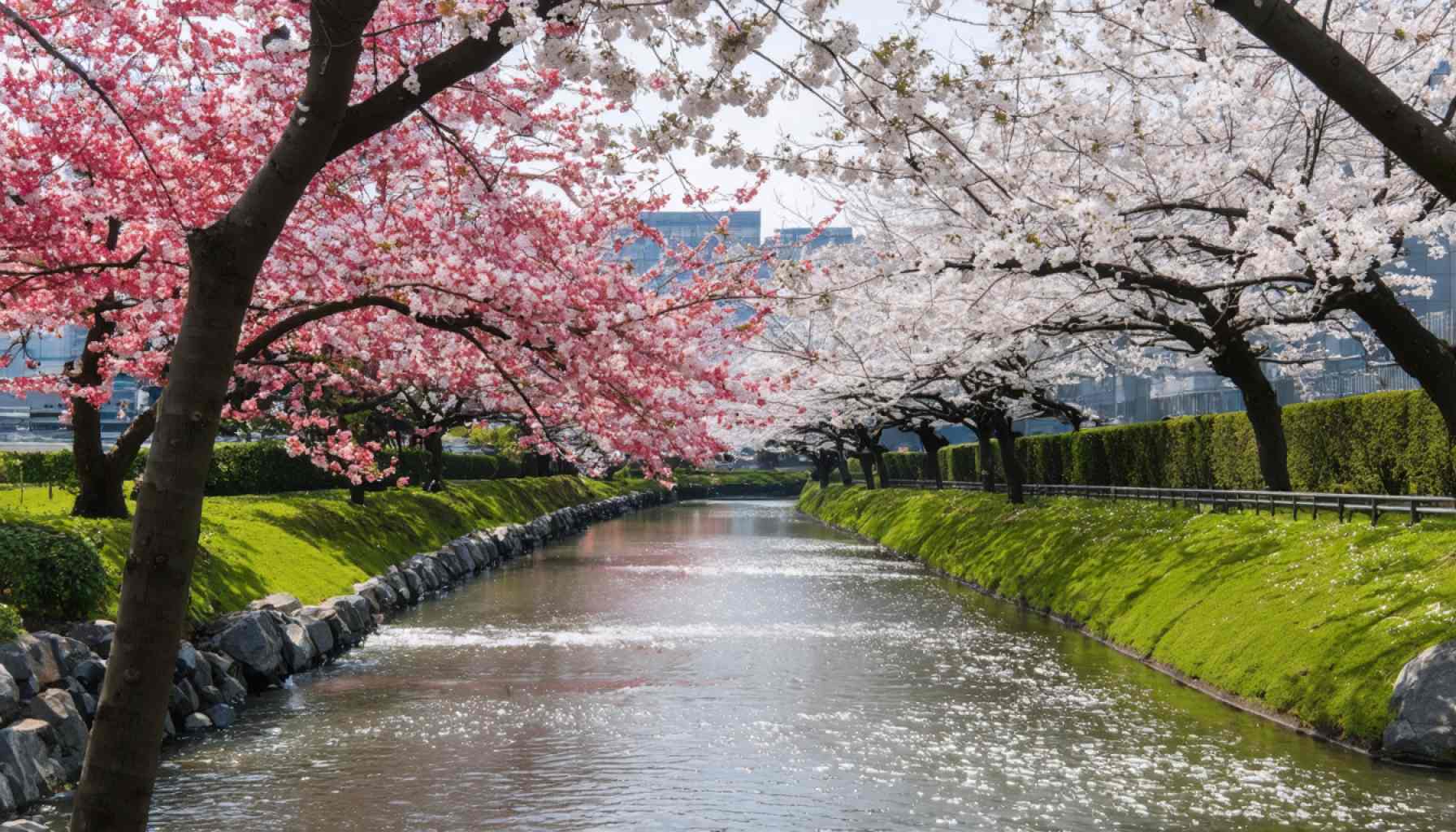- The cherry blossom season in Tokyo begins at Yasukuni Shrine, with early blooms marking this year’s start.
- The “kaika” declaration by the Japan Meteorological Agency signifies the official start when sakura trees display five to six flowers.
- Full bloom is anticipated by March 27th, with the warm weather likely accelerating the process.
- Yasukuni Shrine and the Chidorigafuchi area, known for their picturesque settings, become hubs of celebration.
- The Chiyoda Sakura Festival enriches the cultural scene until April 23rd, with illuminated promenades from March 28th to April 8th.
- The sakura season fosters communal bonds and a deep appreciation for nature’s fleeting beauty.
Amidst the bustling heart of Tokyo, a gentle transformation whispers through the city as the iconic cherry blossoms unveil their delicate petals. The atmospheric choreography begins at the historic site of Yasukuni Shrine, where onlookers gather, caught in the spell of nature’s subtle spectacle. This year, the announcement came earlier than last, signaling an eager start to the season of renewal.
In the heart of Chiyoda Ward, the anticipation crescendos as over 200 people—residents and journalists alike—stand attentive, watching as the official declaration of “kaika” (blossoming) is proclaimed. This miracle of spring officially commences when the sakura trees boast five or six blossoming flowers, a tradition carefully observed by the Japan Meteorological Agency.
As the cherry blossoms crown their branches, anticipation for the full bloom, predicted to burst forth by March 27th, swells. Known for its swift transformation from bloom to full blossom, the delicate Somei-Yoshino species marks a short-lived, yet profoundly cherished chapter in Tokyo’s seasonal calendar. The warm weather, anticipated to rise, promises an accelerated and vibrant blooming period.
Yasukuni Shrine, cradled by approximately 500 cherry trees, forms the epicenter of this floral celebration. Just a stone’s throw away, the renowned Chidorigafuchi area, famed for its picturesque cherry banks, stands ready to charm visitors. Here, the Chiyoda Sakura Festival takes place, gracing the neighborhood with cultural elegance until April 23rd. As twilight descends, the Chidorigafuchi promenade illuminates, casting an enchanting glow from March 28th to April 8th, while the nearby boat dock extends its hours into the evening to accommodate eager revelers seeking to capture the ethereal sight.
Every petal that drifts from the trees above is a reminder of our bond with nature’s fleeting beauty. The sakura season, ephemeral yet eternal in memory, draws people together, connecting the city with its natural roots. As Tokyo dons its flowery crown, residents and visitors alike embrace this enchanting rebirth with reverence and joy, cherishing the brief moment when the city is painted in shades of soft pink.
Experience Tokyo’s Cherry Blossom Magic: What You Need to Know
The cherry blossom season in Tokyo is a breathtaking spectacle that blends natural beauty with cultural heritage. Here’s a comprehensive guide to enhancing your experience during this magical time.
How to Make the Most of Tokyo’s Cherry Blossoms
1. Timing Your Visit:
– Early Blooming: The cherry blossoms (sakura) bloom earlier than usual this year, starting with the “kaika” or opening, officially declared when flowers appear on the Somei-Yoshino trees.
– Peak Bloom: Full bloom is expected around March 27th. Plan your visit around these dates to catch the blossoms at their best.
2. Best Viewing Spots:
– Yasukuni Shrine: With around 500 cherry trees, this historic site offers a serene and quintessential viewing experience.
– Chidorigafuchi: Known for its picturesque views and nighttime illumination from March 28th to April 8th, it provides a romantic setting. Enjoy a boat ride for an immersive experience.
3. Cultural Events:
– Chiyoda Sakura Festival: Running until April 23rd, this festival adds a cultural layer to the botanical beauty with traditional performances and activities.
4. Capture the Moment:
– Photography Tips: The soft lighting at dawn and dusk offers the best conditions for photography. Use a tripod for night shots during the illumination events.
Market Forecasts & Industry Trends
The sakura season in Japan’s tourism industry sees a significant boost each year. According to the Japan National Tourism Organization, the cherry blossom season attracts millions of tourists, contributing substantially to the local economy. Expect a steady rise in visitor numbers as international travel normalizes post-pandemic.
Real-World Use Cases
– Local Businesses: Cafés and restaurants near these sites often feature sakura-themed offerings, from cherry blossom lattes to mochi, providing visitors with a taste of the season.
– Sustainable Tourism: Engage in eco-friendly practices like using public transport or bicycles to visit sites, helping to minimize environmental impact.
Pros & Cons Overview
– Pros:
– Stunning natural beauty.
– Rich cultural experiences during festivals.
– Great opportunities for photographers and nature lovers.
– Cons:
– Can be crowded, especially during peak bloom.
– Weather can be unpredictable; rain might dampen the experience.
Actionable Recommendations
– Planning Ahead: Book accommodations and travel in advance due to high demand.
– Preparation: Check weather forecasts and local cherry blossom reports to optimize your visit.
– Local Etiquette: Be respectful of cultural practices and dispose of waste properly.
Quick Tips
– Dress Comfortably: Wear layers as temperatures can vary, and comfortable shoes for walking.
– Stay Hydrated: Carry water with you, especially if you’re planning to explore multiple sites.
– Recharge Your Devices: Carry a power bank for your phone and camera to ensure you can capture every moment.
For more information on visiting Japan and the cherry blossom season, visit the Japan National Tourism Organization.
Connecting with nature through Tokyo’s cherry blossoms offers a momentary, yet profound, escape from the hustle and bustle, allowing you to appreciate the fleeting beauty of life.
